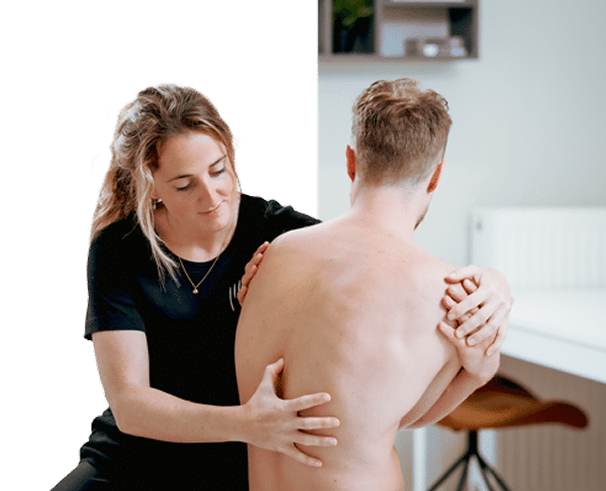Causes of wrist pain
Pain in the wrist often occurs after a fall, overuse or repetitive motion. Sometimes you notice immediately where it comes from, such as after an accident. In other cases, the complaint arises gradually. Common causes are:
- Overexertion or repetitive motion.
- Fall on the outstretched hand.
- Entrapment of a nerve.
- Inflammation or wear and tear of the joint.
- Instability or damage to capsules and ligaments.
Common wrist injuries and conditions
Wrist pain can manifest itself in many ways. Below we discuss the best-known causes.
Carpal Tunnel Syndrome
In this syndrome, a nerve in the wrist becomes pinched in the carpal tunnel. This causes tingling, numbness or pain in the hand. The symptoms often occur at night or during specific movements.
Instability of the wrist
Does your wrist feel limp, creak or sometimes sink unexpectedly? Instability often comes from damaged ligaments or lack of strength. This causes pain, uncertainty and difficulty in loading.
TFCC injury
The TFCC is a structure on the little finger side of the wrist that helps with stability. When this tissue is damaged, you feel pain when turning, lifting or leaning on the hand.
Syndrome of De Quervain
With this complaint, tendons around the thumb are irritated. You experience pain, swelling and difficulty grasping. The complaint frequently occurs with overuse, pregnancy or repetitive handling.
Broken wrist
A broken wrist causes immediate pain, swelling and restriction of movement. Often the radius or ulna is damaged. Depending on the fracture, recovery takes several weeks to months.
Osteoarthritis in the wrist
With osteoarthritis, the cartilage becomes thinner and less flexible. You notice this by stiffness, pain with movement and sometimes a cracking sensation. Osteoarthritis usually develops gradually.
Common complaints with wrist problems
Do you recognize any of these signs? If so, it’s smart to have your wrist properly examined:
- Pain when moving or pressing on the wrist.
- Numbness or tingling in fingers or hand.
- Decreased strength or difficulty holding something.
- Swelling or stiffness in the joint.
- Creaking or snapping motion.
- Limited mobility.
- Aggravation on exertion or recurrence.
The earlier you are there, the better the recovery. That way you prevent symptoms from coming back or lingering for a long time.
When does physical therapy help wrist pain?
With mild symptoms, rest is sometimes enough. But do you keep having pain or notice that your recovery is stagnating? Then physical therapy can help to make your wrist stronger, more stable and flexible. In case of complaints after a fracture or surgery, we also guide you in the recovery process.
This is how The Physio Man helps you recover
We look beyond the pain. Our approach focuses on the cause as well as lasting recovery.
Mobilize, empower and guide
We deploy various techniques, such as:
- Mobilizing the joint.
- Exercises for strength and coordination.
- Taping or support for stability.
- Advice on posture and load.
Long-term recovery
We focus not only on reducing pain, but also on improving your movement patterns. This will prevent the symptoms from coming back.
This is how we approach it at The Physio Man
1. Intake and examination
We listen to your story and do physical examinations to find out where your symptoms are coming from.
2. Customized treatment
You get a plan that fits your situation and goals.
3. Working together
We gently build your load capacity so you can quickly get back to doing what you care about.
Share this article:


